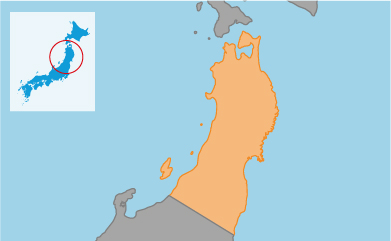
North Honshu roughly equates to a region stretching from just north of the Kanto Plain, surrounding Tokyo, to the Tsugaru Straits, which divide Honshu and Hokkaido, and is commonly known by the Japanese as Tohoku. North Honshu is akin to Hokkaido, with long and fierce winters, although summers tend to be hotter and more humid; an ideal climate for the growing of the high-quality rice it is famed for in Japan.
The region was one of the last on Honshu to be subjugated in the 9th Century by the Yamato, the ancient people from which the Japanese derived. Perhaps because of their history and the harsher climate, the locals are independent, plain-spoken and resolute. Nevertheless, they are also warm and welcoming. These characteristics held them in good stead in the aftermath of the catastrophic tsunami that devastated much of the region’s east coast in 2011. They also retain a strongly rural identity, which is expressed in their festivals, some of the most spectacular and, occasionally, lustiest in Japan. However the sacred is also to be found in spectacularly sited temples and shrines, from where shugenja religious ascetics can still sometimes be found setting forth to roam North Honshu’s rugged interior in pilgrimage.
The itinerant poet Matuso Basho journeyed to North Honshu in the late 17th Century and the experience is related in his masterpiece The Narrow Road to the North. Basho's evocative haiku poetry immortalised and made famous some of the region's most delightful scenery including Matsushima Bay, Hiraizumi and the Mogami River. (To be fair, however, Basho finished his travels in Central Honshu.)




